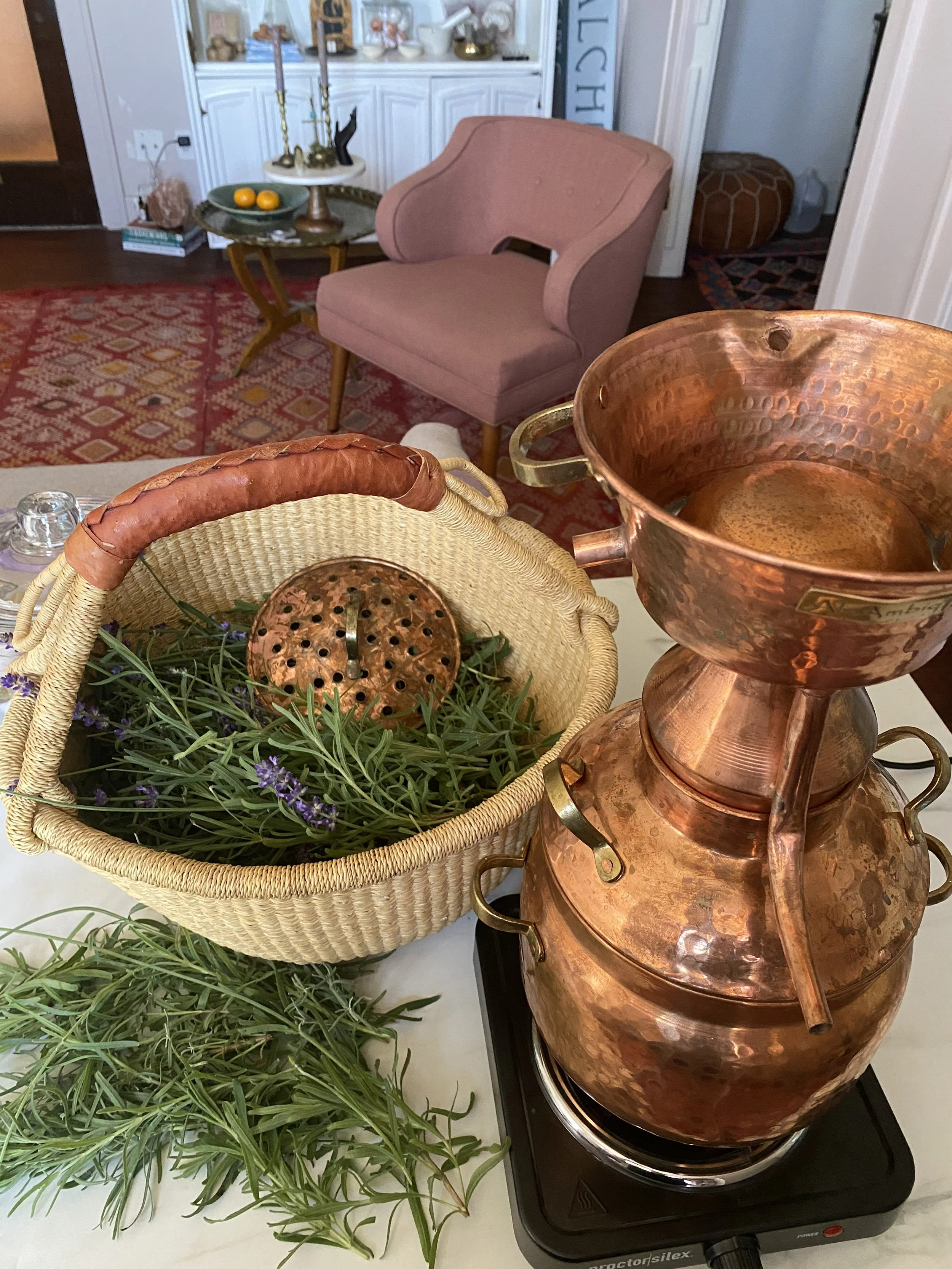Blue Moon Hydrosol
Ancient and Modern: Hydrosols and Floral Waters
Jeanne Rose coined the name hydrosol in the mid 1990s, so while we can trace the process of distillation back thousands of years, the name hydrosol is relatively new.
Rose’s word “hydrosl” explains the component parts: hydro (water) and sol (particles in a medium). The microscopic droplets of essential oils and other volatile essences are suspended in the liquid. The molecules that were held in the precious plant material reveal themselves in the process.
The hydrosol can be used as a tool for herbalists to treat a variety of imbalances, for formulating cosmetics, as mists for use in rituals, or simply enjoyed for their aromatics.
The process of creating rosewater was refined by Persian chemists in the medieval Islamic world. In the late 1300s rosewater distillation began at Santa Maria Novella (Firenze) as a plague preservative.
A still of ones own
Distilling on a small scale has given me such respect for the life force of the plants themselves. The ritual of distilling a hydrosol is slow and intentional, it engages all of your senses. And I’m super evangelical about hobbyists and DIYers enjoying the process with a still of your own.
The 3L alquitar (¾ gallon) is a great size: It doesn’t take up a lot of space, has very few parts, is economical when considering the cost of shipping, and it’s small enough to operate on a hot plate.* If you are looking to do some casual distilling of your own, I highly recommend this still. It’s big enough to get a lovely hydrosol, and small enough that you don’t need hours and hours from start to finish.
You will need some other equipment to do your distilling. You can go ‘all in’ or keep it super simple with this still.
Other helpful equipment includes:
A small submersible pump
A 5 gallon bucket
Rubber tubing to connect the pump to the condensing unit (water flows from the bucket, with help of the pump, into the bottom of the condenser)
Rubber tubing to allow water to circulate back to the bucket from the top of the condensing unit
A regulator to control the flow of water into the condenser
The herbs and spices loaded into the belly of the still: ready for fresh water
The Alchemy Blue Moon Hydrosol
Long before the advent of alcohol-based perfumes, THIS is one way fragrance was made. Arabic perfumes and Indian Attars are still done using traditional (and very sophisticated) distillations. Inspired by this ancient technology, I have begun to experiment with this method of extracting scented plant materials.
In August experimented with aromatics in mind: harvesting what was ready in the garden at the Super Blue Moon: rose geranium, lavender, rosemary, sage, lemon thyme, lemon verbena, clary sage, wormwood, patchouli and yarrow… and to this I added a vanilla bean, tonka, cinnamon stick, frankincense resin and benzoin too for their connections to magic and cleansing power. The vision was to create a dreamy mist for the pillow.
The result is a fragrant herbal water with a balance of lemony sweetness, a rosy heart and pervasive spiciness all the way through. I’ll say you don’t catch the vanilla so much, but it definitely has me thinking about new ideas for the future.
It's easy to see why early distillers were enchanted by the process of transforming plants into this magical liquid.
You are capturing the spirit of the plant.
The still is small enough to set up and use in the studio
Recommended reading:
375 Essential Oils and Hydrosols, Jeanne Rose
Harvest to Hydrosol, Ann Harman
Hydrosols: The New Aromatherapy, Suzanne Catty
Helpful Articles + Videos:
Copper Alembic Distilling with Hannah Kincaid
National Institutes of Health, exploring hydrosols v essential oils for plant medicine
Which Still: *Copper won’t work on an induction burner


